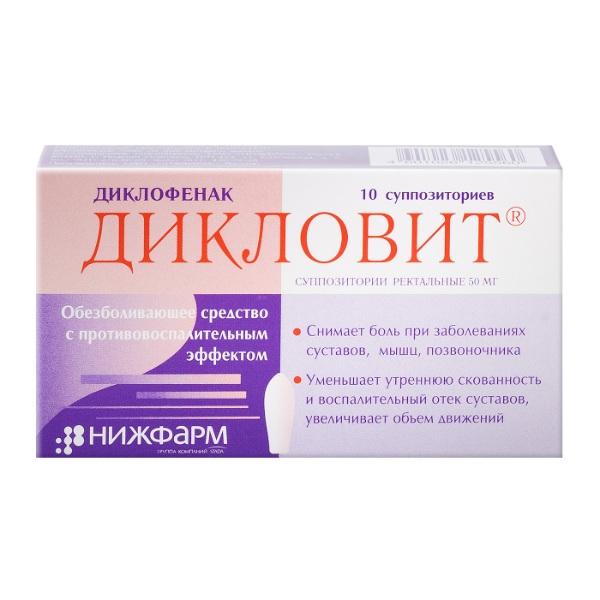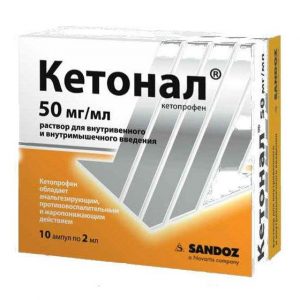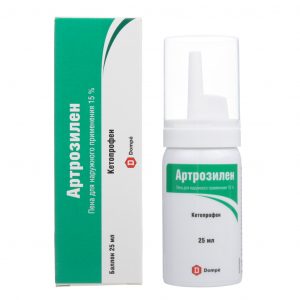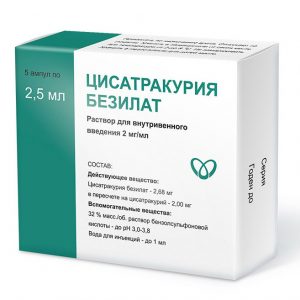Description
Latin name
Diclovitum
packaging 10 pcs
Indications
diseases of the musculoskeletal system (rheumatoid arthritis, psoriatic, juvenile chronic arthritis, ankylosing spondylitis, gouty arthritis, rheumatic soft tissues, osteoarthrosis of the peripheral joints and spine, including with radicular syndrome, tendovaginitis, bursitis).
Mild to moderate pain syndrome: neuralgia, myalgia, lumbar ischialgia, post-traumatic pain syndrome accompanied by inflammation, postoperative pain, headache, migraine, algomenorrhea, adnexitis, toothache.
As part of the complex treatment of infectious and inflammatory diseases of the ear, throat, nose with severe pain (pharyngitis, tonsillitis, otitis media).
Contraindications
Hypersensitivity (including other NSAIDs), erosive and ulcerative lesions of the gastrointestinal tract (in the acute phase), bleeding from the gastrointestinal tract, “aspirin” asthma, hematopoiesis, hemostasis (including hemophilia), pregnancy, childhood (up to 15 years), lactation, rectal bleeding, hemorrhoids, trauma or inflammation of the rectum.
Precautions
Anemia, bronchial asthma, congestive heart failure, arterial hypertension, coronary heart disease, edema syndrome, liver or kidney failure, alcoholism, inflammatory bowel disease, erosive and ulcerative diseases of the gastrointestinal tract without exacerbation, diabetes mellitus, condition after extensive surgery, induced porphyria, advanced age, diverticulitis, systemic connective tissue diseases.
Use during pregnancy and lactation
Contraindicated in pregnancy and lactation.
Composition
One suppository contains:
Active ingredient – diclofenac sodium – 50 mg
Base for suppositories – solid fat (Vitepsol brand H 15, W 35, Suppository brand NA 15, NAS 50) – until a suppository weighing 1.26 g is obtained
Dosage and administration
Rectally. Suppositories are introduced into the rectum, preferably after spontaneous bowel movement or a cleansing enema. After the introduction of the suppository, it is recommended to stay in bed for 20-30 minutes.
Adults and teenagers from 15 years of age: 1 suppository 2-3 times a day.
Perhaps the simultaneous use of the drug Diklovit ® with oral forms of diclofenac sodium. In this case, the total daily dose of diclofenac sodium should not exceed 150 mg.
With algodismenorrhea (when the first symptoms appear), the initial dose is 50-100 mg / day (1 suppository 1-2 times a day), if necessary, increase the dose over several menstrual cycles to 150 mg (1 suppository 3 times a day) .
Migraine attack – 100 mg (2 suppositories) at the first sign of an attack. If necessary, repeat 100 mg (2 suppositories). If it is necessary to continue treatment on the following days, the daily dose should not exceed 150 mg (3 suppositories) per day.
The duration of treatment is determined by the doctor depending on the severity of the disease.
Side effects
Emerging side effects depend on individual sensitivity, size of the applied dose and duration of treatment. The concept of “sometimes” is used if side effects are observed in 1-10% of patients, “rarely” in 0.001-1% of patients.
Gastrointestinal tract: Sometimes – abdominal pains, bloating, diarrhea, nausea, constipation, flatulence, increased liver enzymes, peptic ulcer with possible complications (bleeding, perforation), gastrointestinal bleeding
Rarely – vomiting, jaundice melena, the appearance of blood in the feces, damage to the esophagus, aphthous stomatitis, dry mouth and mucous membranes, hepatitis (possibly a fulminant course), liver necrosis, cirrhosis, hepatorenal syndrome, changes in appetite, pancreatitis, cholecystopancreatitis, colitis.
Nervous system: Sometimes – headache, dizziness
Rarely – sleep disturbance, drowsiness, depression, irritability, aseptic meningitis (more often in patients with systemic lupus erythematosus and other systemic diseases of the connective tissue), cramps, weakness, disorientation, nightmares, a feeling of fear.
Sensory organs: Sometimes – tinnitus
Rarely – blurred vision, diplopia, taste disturbance, reversible or irreversible hearing loss, scotoma.
Skin: Sometimes – itching, skin rash
Rarely – alopecia, urticaria, eczema, toxic dermatitis, erythema multiforme, including Stevens-Johnson syndrome, toxic epidermal necrolysis (Lyell syndrome), increased photosensitivity, small-point hemorrhage.
Genitourinary system: Sometimes – fluid retention
Rarely – nephrotic syndrome, proteinuria, oliguria, hematuria, interstitial nephritis, papillary necrosis, acute renal failure, azotemia.
Hematopoietic organs and immune system: Sometimes anemia (including hemolytic and aplastic anemia), leukopenia, thrombocytopenia, eosinophilia, agranulocytosis, thrombocytopenic purpura, worsening of the course of infectious processes (development of necrotizing fasciitis).
Respiratory system: Rarely – cough, bronchospasm, laryngeal edema, pneumonitis.
Cardiovascular system: Rarely – increased blood pressure, congestive heart failure, extrasystole, chest pain.
Allergic reactions: Rarely – anaphylactoid reactions, anaphylactic shock (usually develops rapidly), swelling of the lips and tongue, allergic vasculitis.
Local reactions with rectal administration: Rarely – irritation of the rectal mucosa, mucous discharge mixed with blood, pain during bowel movements, rectal bleeding.
Drug Interaction
Increases plasma concentrations of digoxin, methotrexate, lithium and cyclosporine.
Reduces the effect of diuretics, against the background of potassium-sparing diuretics increases the risk of hyperkalemia against anticoagulants, thrombolytic agents (alteplase, streptokinase, urokinase) – the risk of bleeding (more often from the gastrointestinal tract).
Reduces the effects of hypotensive and sleeping pills.
Increases the likelihood of side effects of other non-steroidal anti-inflammatory drugs and glucocorticosteroid agents (bleeding in the gastrointestinal tract), toxicity of methotrexate and nephrotoxicity of cyclosporine. Acetylsalicylic acid lowers the concentration of diclofenac in the blood.
Concomitant use with paracetamol increases the risk of nephrotoxic effects of diclofenac.
Reduces the effect of hypoglycemic agents.
Cefamandol, cefoperazone, cefotetan, valproic acid and plicamycin increase the incidence of hypoprothrombinemia.
Cyclosporine and gold preparations increase the effect of diclofenac on the synthesis of prostaglandins in the kidneys, which increases nephrotoxicity.
Concurrent administration with ethanol, colchicine, corticotropin and St. John’s wort increases the risk of bleeding in the gastrointestinal tract.
Diclofenac enhances the effect of photosensitization drugs.
Drugs that block tubular secretion increase plasma concentrations of diclofenac, thereby increasing its toxicity.
Overdose
Symptoms: dizziness, headache, shortness of breath, clouding of consciousness, in children – myoclonic convulsions, nausea, vomiting, abdominal pain, bleeding, impaired liver and kidney function.
Treatment: activated charcoal, symptomatic therapy. Forced diuresis, hemodialysis are ineffective.
Storage conditions
At a temperature not exceeding 25 ° C.
Keep out of the reach of children.
The Expiration of
is 3 years. Do not use the product after the expiry date.
Deystvuyuschee substances
Diclofenac
Dosage form
Dosage form
rectal suppositories
Nizhpharm, Russia




